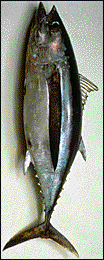 Go back in time a little bit,
Go back in time a little bit,  see all archived TUNAs.
see all archived TUNAs.
 Go back in time a little bit,
Go back in time a little bit,
 see all archived TUNAs.
see all archived TUNAs.
Click on talk titles to get the abstract and location.
| October 2009 | ||||||
| Sunday | Monday | Tuesday | Wednesday | Thursday | Friday | Saturday |
|---|---|---|---|---|---|---|
1 |
2 |
3 |
||||
4 |
5 |
6 Meredith Hughes, CfA: Resolving Inner Holes in Disks Around Young Stars |
7 |
8 |
9 |
10 |
11 |
12 |
13 Ricardo Schiavon, Gemini: Abundances in M31 Globular Clusters |
14 |
15 |
16 |
17 |
18 |
19 |
20 Glenn Jones, NRAO/Caltech: TBA |
21 |
22 |
23 |
24 |
25 |
26 |
27 Ming Sun, UVa: Radio AGN, X-ray cool cores and the flip side of galaxy formation |
28 |
29 |
30 |
31 |
| November 2009 | ||||||
| Sunday | Monday | Tuesday | Wednesday | Thursday | Friday | Saturday |
|---|---|---|---|---|---|---|
1 |
2 Rasmus Voss, NRAO: Populations of LMXBs in nearby galaxies |
3 Kartik Sheth, NRAO: The Spitzer Survey for Stellar Structure in Galaxies (S4G) |
4 |
5 |
6 |
7 |
8 |
9 Scott Ransom, NRAO: Searching for Radio Pulsars in Unidentified Fermi LAT Bright Sources |
10 Huib Intema, NRAO: TBA |
11 |
12 |
13 |
14 |
15 |
16 Marsha Bishop, NRAO: TBA |
17 Rachel Friesen, NRAO: Clustered Low Mass Star Formation in the Ophiuchus Molecular Cloud |
18 |
19 |
20 |
21 |
22 |
23 Al Wootten, NRAO: Nitrogen Isotopic Fractionation in Interstellar Ammonia |
24 Manuel Aravena, NRAO: The Varied Nature of MAMBO SMGs in the COSMOS field |
25 |
26 |
27 |
28 |
29 |
30 |
|||||